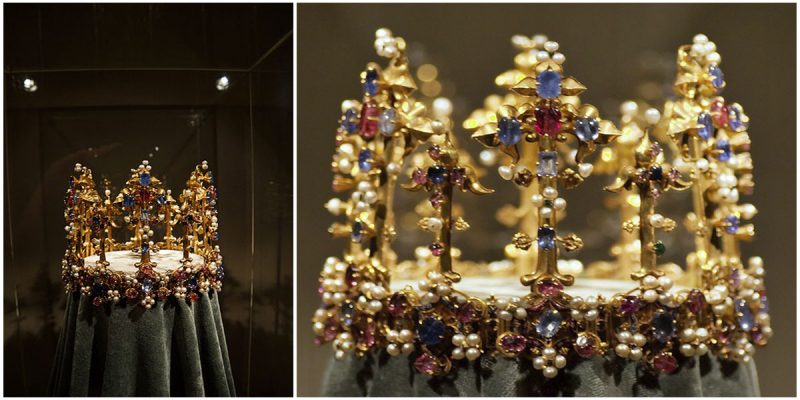Made of gold with enamel, sapphires, rubies, emeralds, diamonds, and pearls, the Crown of Princess Blanche, also called the Palatine Crown or Bohemian Crown, is the oldest surviving royal crown known to have been in England, and probably dates to the years after 1370.
The crown came to the Palatinate line of the House of Wittelsbach in 1402 as a dowry of Princess Blanche of England, a daughter of King Henry IV of England, on her marriage to Louis III, Elector Palatine.
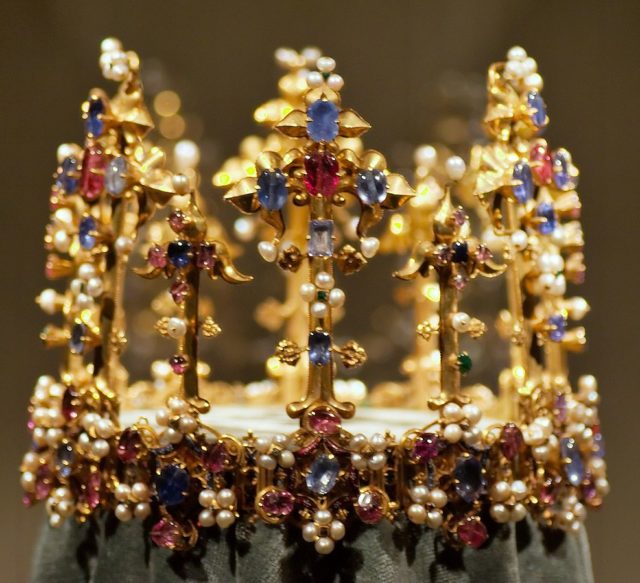
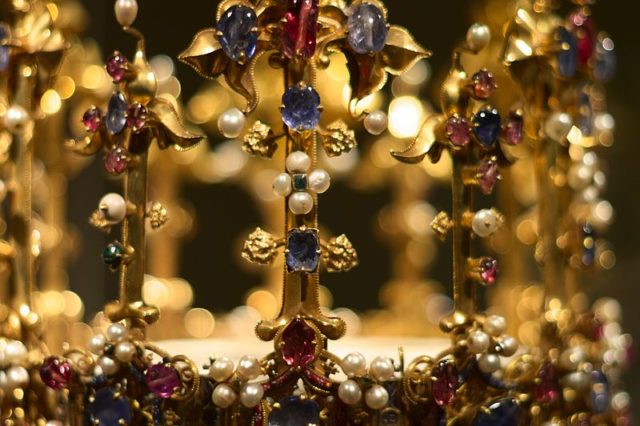
However, it is not thought that the crown was made for Blanche because it was first recorded in a list of 1399, recording the movement of some royal jewels in London, some two years before the marriage of Princess Blanche.
Experts believe that the crown probably belonged to King Edward III or Queen Anne of Bohemia, the wife of King Richard II, whom she married in 1382.
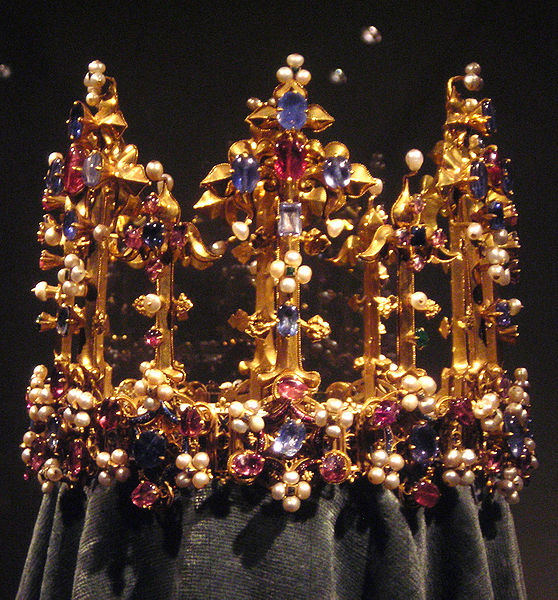
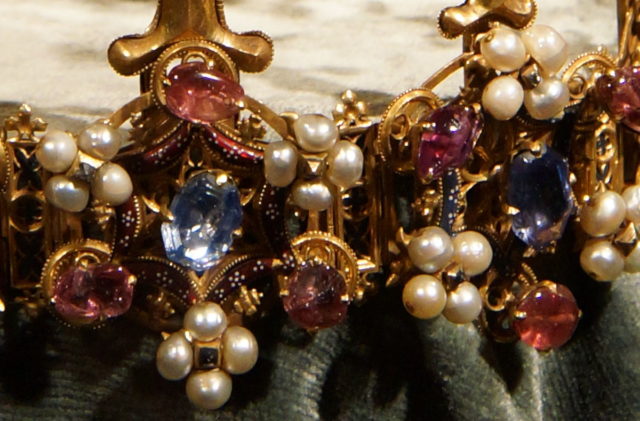
The crown is in a fleur-de-lis (lily flower) shape, popular for medieval crowns, with twelve lilies rising from the circlet.
The circlet’s design is based on twelve gold rings beneath the lilies, mounted with hexagonal shapes in enamel and gold openwork.
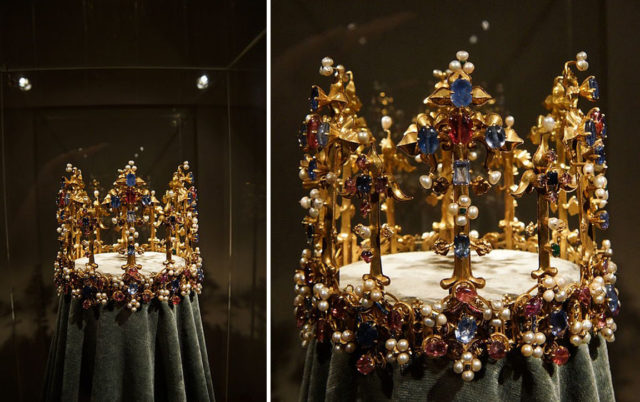
The lily stems are detachable, and the places on the crown where they fit are numbered I to XII so they can be re-attached correctly. Its height and diameter are both 18 cm. It has been described as “one of the finest achievements of the Gothic goldsmiths”.
Read another story from us: Some the world’s most beautiful castles
Since 1782, the crown is displayed in the treasury of the Munich Treasury with other jewels belonging to the Palatine branch of the Wittelsbach family.
